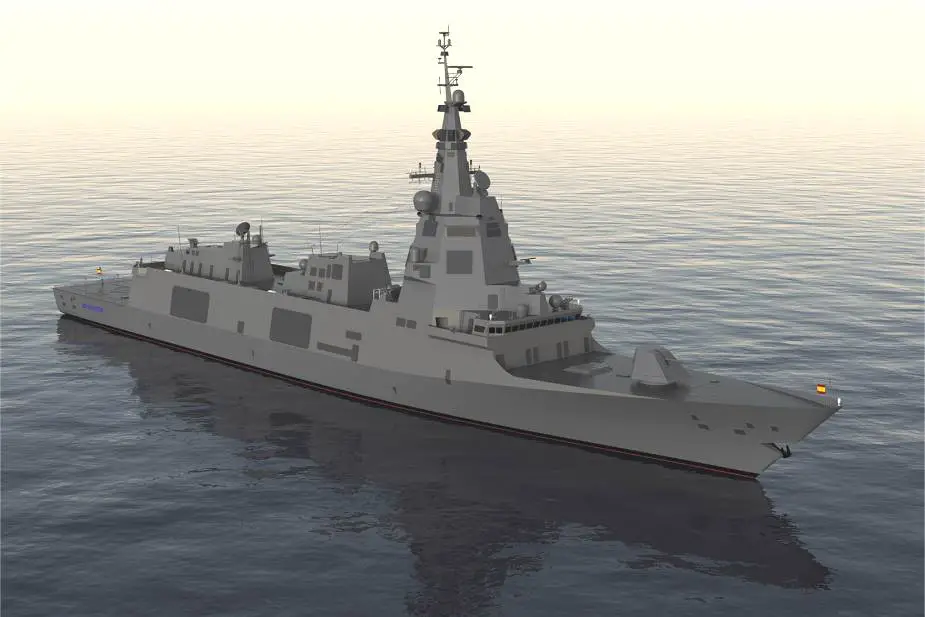Breaking news
Euronaval Online 2020: Lockheed Martin to equip new Spanish Navy F110 with AN/SPY-7(V)2 solid state S-band radar.
American Company Lockheed Martin in collaboration with Spanish company Navantia to equip five new Spanish Navy F-110 multimission frigates and their land-based test site (Centro de Integración de Sistemas en Tierra or CIST) – with Lockheed Martin’s first naval installation of its AN/SPY-7(V)2 solid state S-band radar. Following the U.S. government’s designation of their variant as SPY-7(V)1, the U.S. government has declared Spain’s SPY-7 radar as SPY-7(V)2.
 Rendering of the future Spanish navy F-110 frigate equipped with AN/SPY-7(V)2. (Picture source Navantia)
Rendering of the future Spanish navy F-110 frigate equipped with AN/SPY-7(V)2. (Picture source Navantia)
The F-110 will host the first-ever naval solid state S-band AN/SPY-7(V)2 radar for the Spanish Navy. To foster the growth of Spain’s defense and technology industries, Lockheed Martin and Spanish company, Indra, will jointly provide the radar. It will go to sea as part of the Aegis Weapon System, which will be integrated with the ship’s combat management system SCOMBA, when the first frigate deploys in 2026.
The AN/SPY-7(V)2 is a modular and scalable solid state radar, allowing for continuous surveillance and protection. It will be fully integrated with the Aegis Combat System, providing advanced technology for future ship classes. It uses gallium nitride (GaN) as its material building block, which allows for better cooling of the radar – leading to increased and sustained performance. Instead of one array scanning across an area, the radar is made up of thousands of mini scanners, enabling solid state coverage of the surveillance area. This subarray-based structure makes the radar easily upgradeable as threats evolve.
The Aegis Weapon System is the most deployed combat system in the world, and its flexible system enables it to fulfill a variety of missions. Due in part to its unique open architecture design, the Aegis family continues to grow internationally as more nations around the world partner with Lockheed Martin.
The F110 also named Bonifaz class is a new multi-purpose, anti-submarine class of Aegis combat system-fitted heavy frigates under development for the Spanish Navy. The project is being co-developed by the Spanish Ministry of Defence and the state-owned company Navantia. The construction of the frigates is to begin by 2020 and are scheduled to be delivered between 2023 and 2027.
The F110 will be powered by 2 electric motors GE LM-2500 gas turbine, 4 diesel engines MTU 4000, and 4 diesel encapsulated generators of 3MW each. She will reach a maximum speed of 26 knots with a maximum cruising range of 4,100 NM at 15 knots.
The F110 will be armed with one Lockheed Martin Mk-41 Baseline VII VLS 16 cells (SAM Standard SM-2MR, ESSM RIM 162B), one naval gun Leonardo 127/64 LW Vulcano 5inch/64., two Mk-32 Mod. 9 double torpedo launchers for Mk-54 Mod. 5 lightweight torpedoes., 4 remote-controlled gun system armed with 12.7 mm machine gun and eight McDonnell Douglas RGM-84 Harpoon anti-ship missile.



























